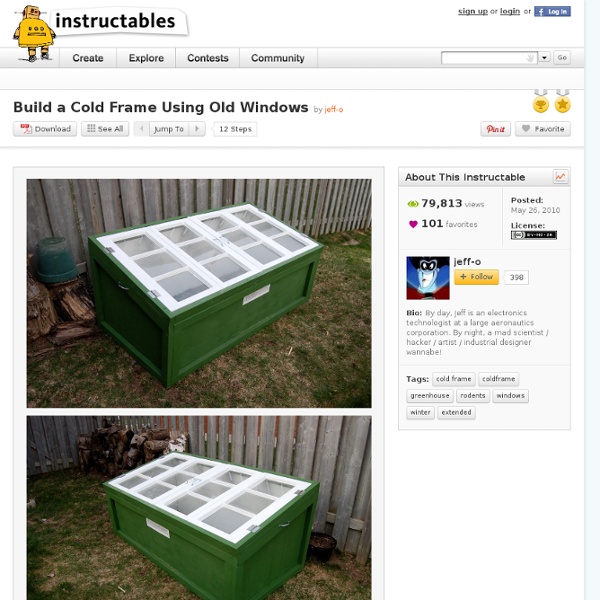$3 Emergency Solar-Powered Radio Made With an Altoids Tin
Joshua Zimmerman has a great project up on Instructables for turning an Altoids tin into a compact solar radio. All said, the entire project cost a whole $3. It seems like a project coming at a time when everyone is ultra aware of emergency situations, so it is both a fun and practical weekend tinkering project. And he's right. With a project time of just under an hour, it's ideal for testing out your DIY skills on a weekend. Joshua lists parts and tools as:an FM Radio, two Solar Garden Lights, 1 Diode ($1 for 100 of them online, or take one out of any random junk pile), and a few basic tools like a soldering iron, drill, some wire and wire strippers, a headset or the speakers from a set of earbuds, and of course, the Altoids tin. The full instructions are on Instructables, so you can get the details for putting this together yourself -- the steps don't look daunting, and it's a great learning project.
A Pretty Penny | life & style. fresh-picked {almost} daily.
Breadboard How To
The purpose of the breadboard is to make quick electrical connections between components- like resistors, LEDs, capacitors, etc- so that you can test your circuit before permanently soldering it together. Breadboards have many small sockets on them, and some groups of sockets are electrically connected to each other. On the underside of the board there are many small metal strips which physically connect certain groups of sockets together and allow electricity to flow freely between them. These strips are probably not visible on the underside of your breadboard, but the third picture shows how they are organized. Breadboards are usually divided into four sections, two outer sections and two inner sections.
How to Make Clothing Buttons from Shrink Plastic…
This tutorial is an old one of mine that’s too good not to share again. Since posting the first time, I’ve had lots of questions about these buttons which will hopefully be answered in this revised post. Equipment Some handy notes: 1. single hole, hole punch (like this one here). 2. 3. Okay.. lets get started! Tracing tips: You can use either coloured pencils or permanent pens. Words must be writted backwards in order to be readable. Shrinking the buttons: To shrink the buttons, you can use an oven or a heat gun (the kind used for embellishing). After the buttons have twisted and twirled, and are LYING FLAT, it’s time to take them out. Note: If the skrinking is taking too long, you may need to turn your oven up. Here’s a short little stop-motion to make sure you’ve got the gist of how easy this is! Shrink Paper {here} Circle Punch {here} Hole punch {here} Pens {here} Update: I’ve made a video to show how to shrink the buttons using a craft embellishment heat gun. Kimanh Hi my name's Kimanh.
Top 40 Useful Sites To Learn New Skills
The web is a powerful resource that can easily help you learn new skills. You just have to know where to look. Sure, you can use Google, Yahoo, or Bing to search for sites where you can learn new skills , but I figured I’d save you some time. Here are the top 40 sites I have personally used over the last few years when I want to learn something new. Hack a Day - Hack a Day serves up fresh hacks (short tutorials) every day from around the web and one in-depth ‘How-To hack’ guide each week.eHow - eHow is an online community dedicated to providing visitors the ability to research, share, and discuss solutions and tips for completing day-to-day tasks and projects.Wired How-To Wiki - Collaborate with Wired editors and help them build their extensive library of projects, hacks, tricks and tips.
DIY: Possibly the coolest boots you'll ever wear.
Hands down, my favorite part about looking at fashion blogs are the DIY's. Nothing makes me more happy than creating something with my hands. ESPECIALLY if it sells on the internet for $400 and I can make it for $50:) I've had an extreme obsession with ankle boots for some time now, but havn't been able to find the perfect pair..... and I think I possibly just made them....... (Before picture) Just a plain ol' pair of cowboy boots that I got at the melrose flea market for $40. You can use any color or style. Cut a slit down down the back and stop at the top of the heel, or wherever you want your boots to fold at. Fold the top down. For this particular look the fold should come all the way down to the bottom of the shoe. Get yourself some vintage belts. Start rappin. Just keep layering belts until you've achieved the look you want and cinch them tight so your boots stay on. finito. Another view. Fancy instagram picture of the finished project. Try it and post your pics please:)
Recipes, Kids Crafts, DIY Ideas, Tutorials And More



